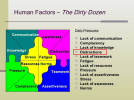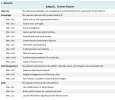Sudburian
Pre-Flight
I am about to become an airplane owner. So to keep myself humble and at a healthy state of nervousness, I look up NTSB reports now and then on the plane type I am interested in, and found one in California where an A&P mechanic conducted an annual on a Cessna 182, didn't install the throttle correctly on a new engine, and the pilot was killed a couple months later due to the unexpected power loss caused by the throttle problem. Here's the NTSB finding:
Docket here. Question: How do we mitigate the risk of this happening any time we take a plane in for work by these good folks who we rely so heavily on? If you yourself are a mechanics pro, great, but let's say that you are not?
Postaccident examination of the wreckage revealed that the engine's throttle control rod was separated from the throttle body control arm. None of the attachment hardware, which comprised of a bolt, washer, castellated nut, and cotter pin, was found. Additionally, no evidence of impact damage was noted in the throttle lever linkage control rod end or the control arm where it attached. The airplane's most recent annual inspection was 78 flight hours and about 2 months before the accident. During the inspection, a new engine was installed. Based on the available information, it is likely that the throttle control connecting hardware was improperly installed or secured during the most recent maintenance, which resulted in its disconnection and a loss of engine power and throttle control while on final approach.
Docket here. Question: How do we mitigate the risk of this happening any time we take a plane in for work by these good folks who we rely so heavily on? If you yourself are a mechanics pro, great, but let's say that you are not?






